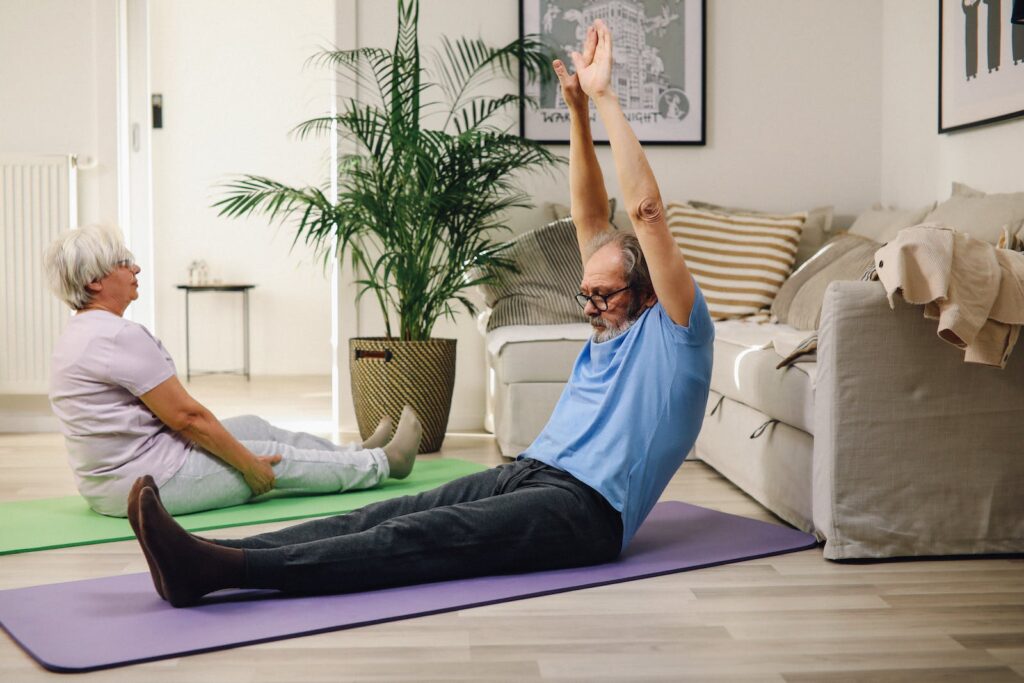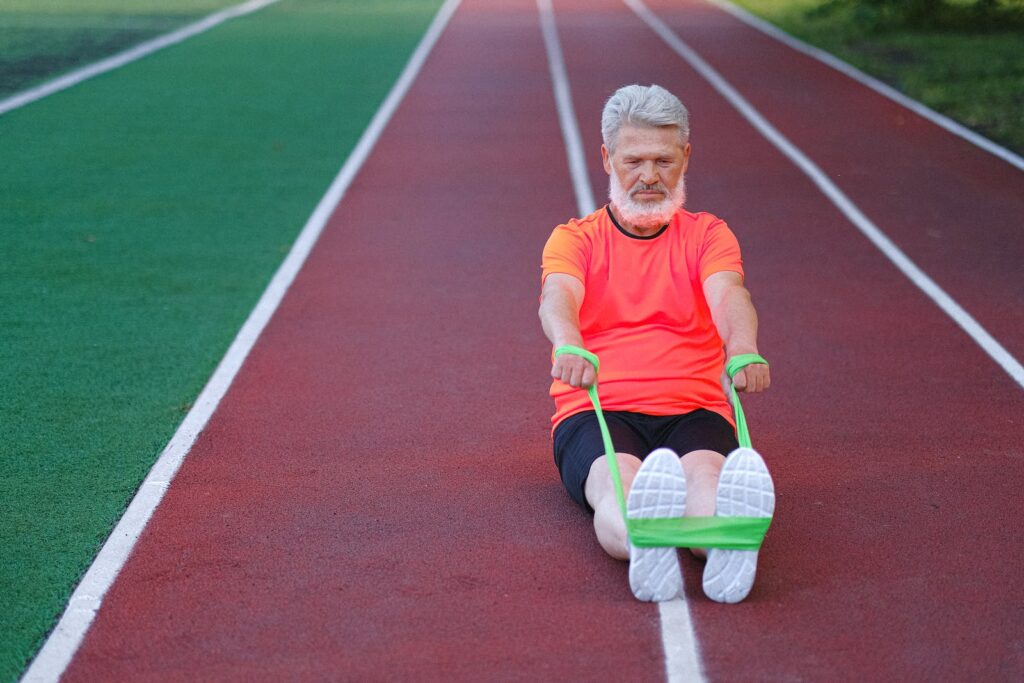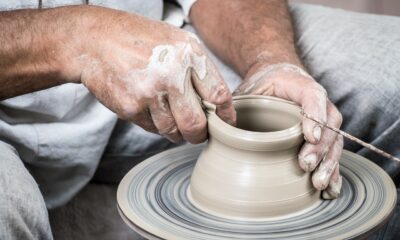Health
Safe and effective senior stretching routines
Discover gentle and effective senior stretching routines to improve flexibility, reduce stiffness, and enhance overall well-being. Say goodbye to muscle aches and hello to improved mobility and vitality!
Whether you are looking to improve flexibility, prevent injuries, or simply maintain a healthy body, incorporating safe and effective stretching routines into your daily routine is crucial as a senior. As we age, our muscles naturally become tighter and less flexible, making it important to prioritize stretching exercises that cater specifically to seniors. In this article, you will discover a variety of gentle and beneficial stretching routines designed to keep you limber, reduce stiffness, and enhance your overall well-being. Say goodbye to muscle aches and hello to improved mobility and vitality by incorporating these safe and effective senior stretching routines into your daily life.

Benefits of Stretching for Seniors
Improved Flexibility
Stretching is a vital component of fitness, especially for seniors. One of the key benefits of stretching for seniors is improved flexibility. As we age, our muscles tend to become tighter and less flexible, which can lead to discomfort and a reduced range of motion. Regular stretching can help to counteract this by increasing the flexibility of your muscles and joints. This can make everyday tasks easier and more comfortable, allowing you to maintain your independence and enjoy a higher quality of life.
Increased Range of Motion
Along with improved flexibility, stretching can also help to increase your range of motion. Range of motion refers to the amount of movement that is possible in a joint. By regularly stretching, you can help to maintain or improve the range of motion in your joints, which is particularly important as you age. This can make it easier to perform daily activities such as reaching for objects, bending down, or getting in and out of chairs. It can also be beneficial for activities that require greater mobility, like dancing or playing sports.
Enhanced Joint Health
Stretching is not only beneficial for your muscles, but also for your joints. As we age, our joints can become stiffer and less mobile, which can lead to discomfort and a decreased ability to move comfortably. By incorporating stretching into your daily routine, you can help to keep your joints healthy and mobile. Stretching exercises that target the specific joints in your body, such as your knees, ankles, or wrists, can help to reduce stiffness and improve joint function.
Reduced Muscle Stiffness
Muscle stiffness is a common issue for many seniors, particularly after periods of inactivity or prolonged periods of sitting. Stretching can help to alleviate muscle stiffness and improve overall muscle function. When you stretch, you are effectively lengthening and elongating your muscles, which can help to release tension and reduce stiffness. This can be especially beneficial for muscles that may have tightened due to prolonged sitting or a sedentary lifestyle. By incorporating stretching into your routine, you can help to prevent muscle stiffness and maintain a greater level of comfort and mobility.
Improved Circulation
Good circulation is crucial for overall health and well-being, especially as we age. Stretching can help to improve circulation by increasing blood flow to the muscles and other tissues. This can help to nourish the muscles and tissues with oxygen and nutrients, while also removing waste products. Improved circulation can have a variety of benefits for seniors, including quicker healing of injuries, reduced muscle soreness, and improved overall vitality.
Enhanced Posture and Balance
As we age, our posture can suffer, leading to issues such as rounded shoulders or a forward head position. Poor posture can impact your balance and increase the risk of falls, which can have serious consequences for seniors. Regular stretching can help to improve posture by lengthening tight muscles that may be pulling the body out of alignment. This can help to correct imbalances and promote a more upright and balanced posture. Additionally, stretching exercises that target the core muscles can help to strengthen the muscles that support the spine and improve overall stability and balance.
Important Considerations for Senior Stretching
Consulting with a Healthcare Professional
Before starting any new exercise routine, it is important to consult with a healthcare professional, especially if you have any pre-existing medical conditions or concerns. They can provide guidance and ensure that the stretching routine you choose is safe and appropriate for your individual needs. They may also be able to recommend specific stretching exercises that are beneficial for your particular condition or situation.
Performing Warm-up Exercises
Before diving into your stretching routine, it is crucial to warm up your muscles. This can help to increase blood flow to the muscles and prepare them for stretching, reducing the risk of injury. Some examples of warm-up exercises for seniors include brisk walking, gentle cycling, or light jogging. Aim to engage in a warm-up routine for at least 5-10 minutes before beginning your stretching exercises.
Choosing the Right Environment
When stretching, it is important to choose the right environment to ensure your safety and comfort. Find a quiet and well-lit space where you can move freely without any distractions. It is also helpful to have a non-slip exercise mat or a soft surface to perform your stretches on. This can provide cushioning for your joints and prevent any accidental slips or falls.
Using Proper Equipment
While stretching does not require any specialized equipment, having some basic items can enhance your stretching routine. Consider investing in a yoga strap or resistance bands, which can help with deeper stretches and provide additional support. Additionally, having a chair or wall nearby for balance can be helpful, especially if you have any concerns about stability or mobility.
Listening to Your Body
When it comes to stretching, it is essential to listen to your body and adjust your routine accordingly. Pay attention to any discomfort or pain during a stretch and modify or stop the exercise if needed. It is normal to feel a gentle pulling or stretching sensation, but sharp or intense pain is not normal and should be avoided. By listening to your body and honoring its limits, you can ensure a safe and effective stretching routine.
Avoiding Overstretching
While stretching is beneficial, it is important to avoid overstretching, especially as a senior. Overstretching can lead to muscle strains or other injuries. Instead, focus on gently extending your range of motion and avoid pushing yourself too far. Gradually increase the intensity and duration of your stretches over time, but always within your personal limits.
Recommended Stretching Techniques for Seniors
Static Stretching
Static stretching involves holding a stretch in a stationary position for a specific period. This is a common stretching technique and can be performed by seniors of all fitness levels. Static stretches can help to improve flexibility and are often used after a workout or as part of a cool-down routine. Examples of static stretches include a standing quad stretch or a seated forward bend.
Dynamic Stretching
Dynamic stretching involves moving through a range of motion, usually in a controlled and rhythmic manner. This type of stretching is beneficial for warming up the muscles and preparing them for activity. Dynamic stretches typically mimic movements that will be performed during exercise or activity. Examples of dynamic stretches for seniors include arm circles or walking lunges.
PNF Stretching
PNF stretching, or proprioceptive neuromuscular facilitation stretching, is an advanced stretching technique that involves both stretching and contracting the muscles. It is often used by athletes or individuals seeking to improve flexibility and range of motion. PNF stretching can be performed with a partner or on your own using resistance exercises. It is recommended that seniors consult with a healthcare professional or qualified trainer before attempting PNF stretching.
Assisted Stretching
Assisted stretching involves the help of a partner or therapist to facilitate deeper stretches. This can be particularly beneficial for seniors who may have limited mobility or flexibility. Assisted stretching can target specific areas of concern and provide a greater stretch than may be possible on your own. It is important to work with a knowledgeable and experienced individual when performing assisted stretching to ensure safety and effectiveness.
Balanced Stretching
Balanced stretching involves targeting both sides of the body equally to maintain balance and prevent muscle imbalances. Many stretching routines naturally incorporate balanced stretching, as they aim to stretch all major muscle groups and joints. By focusing on balanced stretching, seniors can ensure that no muscle group is neglected, promoting overall flexibility and function.
Proprioceptive Neuromuscular Facilitation
Proprioceptive neuromuscular facilitation (PNF) stretching involves a combination of stretching and contracting muscles to improve flexibility. It is a more advanced stretching technique that can significantly improve range of motion and increase muscle strength. PNF stretching is often performed with a partner or therapist who uses resistance and isometric contractions to enhance the stretch. Seniors should consult with a healthcare professional or qualified trainer before attempting PNF stretching.
Stretching Routine for Overall Flexibility
Neck Stretch
Gently tilt your head to the right, bringing your right ear towards your right shoulder. Hold the stretch for 20-30 seconds, feeling a gentle stretch along the side of your neck. Repeat on the left side.
Shoulder Stretch
Extend your right arm across your chest, placing your left hand on your right elbow. Gently pull your right arm towards your chest, feeling a stretch in your shoulder and upper back. Hold for 20-30 seconds and repeat on the opposite side.
Chest Stretch
Stand with your feet shoulder-width apart and interlace your fingers behind your back. Straighten your arms and lift them away from your body, feeling a stretch in your chest. Hold for 20-30 seconds.
Upper Back Stretch
Sit on a chair with your feet flat on the floor. Extend your arms in front of you, crossing them at the wrists. Round your upper back and reach forward, feeling a stretch between your shoulder blades. Hold for 20-30 seconds.
Side Stretch
Stand with your feet hip-width apart. Raise your left arm overhead and lean to the right, feeling a stretch along the left side of your body. Hold for 20-30 seconds and repeat on the opposite side.
Hamstring Stretch
Sit on the edge of a chair and extend your right leg out in front of you. Keeping your back straight, hinge forward at the hips until you feel a stretch in the back of your right leg. Hold for 20-30 seconds and repeat on the left leg.
Quad Stretch
Stand behind a chair and hold onto the back for support. Bend your right knee and grab your right ankle or foot with your right hand. Gently pull your heel towards your glutes, feeling a stretch in the front of your thigh. Hold for 20-30 seconds and repeat on the left side.
Calf Stretch
Stand facing a wall and place your hands against it for support. Step your right foot back, keeping it straight, and press your right heel into the ground. Lean forward, feeling a stretch in your right calf. Hold for 20-30 seconds and repeat on the left side.

Stretching Routine for Improved Balance
Heel-to-Toe Walk
Start by standing with your feet together. Take a step forward with your right foot, placing your right heel directly in front of your left toe. Step forward with your left foot so that your left heel is in front of your right toe. Repeat this walking motion for several steps, focusing on maintaining your balance.
Hip Flexor Stretch
Stand behind a chair and hold onto the back for support. Take a step forward with your right foot, bending your right knee and shifting your weight onto your right leg. Keep your left leg straight and your left foot flat on the ground. Lean forward slightly into the stretch, feeling a gentle stretch in the front of your left hip. Hold for 20-30 seconds and repeat on the opposite side.
Single-Leg Balance
Stand behind a chair and hold onto the back for support. Lift your right foot off the ground, balancing on your left leg. Try to maintain your balance for 20-30 seconds, focusing on keeping your hips level and your core engaged. Repeat on the opposite leg.
Tree Pose
Stand with your feet together and your arms by your sides. Shift your weight onto your left foot and bring the sole of your right foot to rest against your inner left thigh. If this is too challenging, you can place your right foot on your left calf instead. Find your balance and bring your hands together at your chest in a prayer position. Hold for 20-30 seconds and repeat on the other side.
Standing Toe Touch
Stand with your feet hip-width apart and your arms by your sides. Slowly hinge forward at your hips, reaching towards your toes. Try to keep your legs straight, but if that is too challenging, you can bend your knees slightly. Hold for 20-30 seconds, feeling a stretch in the back of your legs and lower back.
Ankle Circles
Sit on a chair with your feet flat on the floor. Lift your right foot off the ground and rotate your ankle in a circular motion. Perform 10-15 circles in one direction, then repeat in the opposite direction. Switch to your left foot and repeat the exercise.
Stretching Routine for Joint Health
Wrist Stretch
Extend your right arm in front of you with your palm facing down. Use your left hand to gently bend your right wrist, bringing your fingers towards your body. Hold the stretch for 20-30 seconds and repeat on the left side.
Ankle Stretch
Sit on a chair with your right foot on the ground. Extend your right leg out in front of you and flex your foot, pointing your toes towards your body. Gently pull your toes towards you with your hands, feeling a stretch in your ankle. Hold for 20-30 seconds and repeat on the left side.
Knee Stretch
Sit on a chair and extend your right leg out in front of you. Place your hands on either side of your knee and gently press down, straightening your leg as much as possible. Hold for 20-30 seconds and repeat on the left leg.
Hip Stretch
Sit on the edge of a chair and cross your right ankle over your left knee. Gently press down on your right knee, feeling a stretch in your right hip. Hold for 20-30 seconds and repeat on the left side.
Spinal Twist
Sit on a chair with your feet flat on the floor. Extend your arms out to the sides at shoulder height. Slowly twist your upper body to the right, reaching your right hand towards the back of the chair. Hold the stretch for 20-30 seconds and repeat on the left side.
Shoulder and Arm Circles
Stand with your feet shoulder-width apart and extend your arms out to the sides at shoulder height. Make small circles with your arms, gradually increasing the size of the circles. After several rotations, reverse the direction of the circles. Perform 10-15 circles in each direction.

Stretching Routine for Back Pain Relief
Cat-Camel Stretch
Begin on your hands and knees, with your hands directly under your shoulders and your knees directly under your hips. Inhale as you arch your back, lifting your chest towards the ceiling and allowing your belly to sink towards the floor. Exhale as you round your back, tucking your chin towards your chest and letting your head and tailbone drop towards the floor. Repeat this movement for several repetitions, moving with your breath.
Child’s Pose
Start on your hands and knees, then sit back on your heels and bring your forehead to rest on the floor. Extend your arms forward or rest them alongside your body, allowing your back to relax and stretch. Hold the position for 20-30 seconds, breathing deeply into your lower back.
Seated Forward Bend
Sit on the edge of a chair with your feet flat on the floor. Slowly hinge forward at the hips, reaching towards your toes. Avoid rounding your back – instead, focus on maintaining a straight spine and lengthening through the crown of your head. Hold the stretch for 20-30 seconds, feeling a gentle stretch in your lower back and hamstrings.
Spinal Extension
Stand with your feet hip-width apart and your hands on your lower back, fingers pointing down. Inhale as you arch your back and gently lean back, lifting your chest towards the ceiling. Exhale as you return to a neutral standing position. Repeat several times, moving with your breath and focusing on lengthening your spine.
Hip Opener
Lie on your back with your knees bent and your feet flat on the floor. Cross your right ankle over your left knee, then reach through the gap between your legs and interlace your hands behind your left thigh. Gently pull your left thigh towards your chest, feeling a stretch in your right hip. Hold for 20-30 seconds and repeat on the opposite side.
Piriformis Stretch
Sit on a chair and cross your right ankle over your left knee. Gently press down on your right knee, feeling a stretch in your right buttock. Hold for 20-30 seconds and repeat on the left side.
Stretching Routine for Posture Improvement
Chest Opener
Stand tall with your feet hip-width apart and interlace your fingers behind your back. Straighten your arms and lift them away from your body, squeezing your shoulder blades together. Keep your chin parallel to the floor and hold the stretch for 20-30 seconds, feeling a gentle opening in your chest.
Upper Back Opener
Stand with your feet hip-width apart and clasp your hands in front of you, palms facing away from your body. Round your upper back, tuck your chin towards your chest, and push your hands away from you, feeling a stretch between your shoulder blades. Hold for 20-30 seconds.
Seated Twist
Sit on a chair with your feet flat on the floor. Place your right hand on the outside of your left knee and gently twist your upper body to the left, looking over your left shoulder. Hold the twist for 20-30 seconds, feeling a stretch in your spine and torso. Repeat on the opposite side.
Lower Back Stretch
Lie on your back with your knees bent and your feet flat on the floor. Place your hands behind your thighs and gently pull your knees towards your chest, feeling a stretch in your lower back. Hold for 20-30 seconds.
Shoulder Blade Squeeze
Sit tall on a chair with your feet flat on the floor. Roll your shoulders back and down, squeezing your shoulder blades together. Hold for a few seconds, then release. Repeat this movement several times, focusing on maintaining good posture throughout.
Chin Tuck
Sit tall on a chair with your feet flat on the floor. Gently tuck your chin towards your chest, allowing the back of your neck to lengthen. Hold for a few seconds, then release. Repeat this movement several times, focusing on keeping your shoulders relaxed and your spine straight.
Stretching Routine for Increased Energy
Full Body Stretch
Stand with your feet together and your arms by your sides. Inhale deeply, reaching your arms overhead and standing on your tiptoes. Hold the stretch for a few seconds, then exhale as you lower your arms and return to a relaxed standing position. Repeat this movement several times, focusing on deep breathing and fully extending your body.
Deep Breathing
Sit tall on a chair with your feet flat on the floor. Place one hand on your belly and the other hand on your chest. Take a slow, deep breath in through your nose, allowing your belly to rise as you fill your lungs with air. Exhale slowly through your mouth, feeling your belly fall. Repeat this deep breathing exercise for several breaths, focusing on inhaling fully and exhaling completely.
Arm and Shoulder Stretch
Stand with your feet hip-width apart and extend your right arm across your chest, keeping it straight. Use your left hand to gently pull your right arm towards your body, feeling a stretch in your shoulder and upper arm. Hold for 20-30 seconds and repeat on the left side.
Leg and Hip Stretch
Sit on the edge of a chair and extend your right leg out in front of you. Keeping your back straight, hinge forward at the hips until you feel a stretch in the back of your right leg and hip. Hold for 20-30 seconds and repeat on the left leg.
Side Bend
Stand with your feet shoulder-width apart and raise your right arm overhead. Lean to the left, feeling a stretch along the right side of your body. Hold for 20-30 seconds and repeat on the opposite side.
Butterfly Stretch
Sit on the floor with your legs bent and the soles of your feet together. Hold onto your ankles and gently press your knees towards the floor, feeling a stretch in your inner thighs. Hold for 20-30 seconds, focusing on maintaining an upright posture.
Tips for a Safe and Effective Stretching Routine
Start Slow and Gradually Increase Intensity
When starting a stretching routine, it is important to start slowly and gradually increase the intensity of your stretches over time. Begin with gentle stretches and hold each stretch for a shorter duration, such as 10-15 seconds. As your flexibility increases, you can gradually increase the duration of each stretch, aiming for 20-30 seconds or longer. Listen to your body and only push yourself to a comfortable limit.
Breathe Properly During Stretches
Proper breathing is crucial during stretching exercises. Breathe deeply and rhythmically, inhaling through your nose and exhaling through your mouth. Avoid holding your breath while stretching, as this can increase muscle tension. Focus on deep belly breathing to help relax your muscles and enhance the effectiveness of your stretches.
Hold Stretches for a Sufficient Duration
To reap the full benefits of stretching, it is important to hold each stretch for a sufficient duration. Aim to hold each stretch for at least 20-30 seconds, as this allows enough time for your muscles to lengthen and relax. Avoid bouncing or jerking movements during stretches, as these can lead to injury. Instead, focus on a gentle and steady stretch, gradually increasing the intensity if comfortable.
Do Not Push Through Pain
While stretching should create a gentle pulling or stretching sensation, it should never be painful. If you experience sharp or intense pain during a stretch, back off or modify the exercise. Pain is your body’s way of signaling that something is wrong, and pushing through it can lead to injury. Always listen to your body and modify stretches as needed to avoid discomfort or pain.
Stay Hydrated
Staying hydrated is important for overall health and can also benefit your stretching routine. Adequate hydration helps to maintain muscle elasticity and prevent muscle cramps, which can occur during stretching. Drink plenty of water throughout the day, especially before and after your stretching routine, to ensure optimal hydration and flexibility.
Combine Stretching with Strength Training
While stretching is important for maintaining flexibility and mobility, it is equally important to incorporate strength training into your fitness routine. Strength training helps to build and maintain muscle mass, which is crucial for overall strength and stability. By combining stretching with strength training exercises, you can achieve a well-rounded fitness routine that promotes overall health and well-being.
In conclusion, incorporating a regular stretching routine into your daily life can provide numerous benefits for seniors. From improved flexibility and increased range of motion to enhanced joint health and reduced muscle stiffness, stretching is a valuable tool for maintaining physical well-being as you age. By following important considerations such as consulting with a healthcare professional, performing warm-up exercises, and choosing the right environment, seniors can safely and effectively incorporate stretching into their fitness routine. Whether you choose static stretching, dynamic stretching, or other stretching techniques, there are various stretching routines available to target different areas of the body and specific goals. By following a well-rounded stretching routine that addresses overall flexibility, balance, joint health, back pain relief, posture improvement, and increased energy, seniors can enjoy the many benefits that stretching has to offer. Remember to always listen to your body, avoid overstretching, and follow proper techniques and guidelines to ensure a safe and effective stretching routine. Happy stretching!














